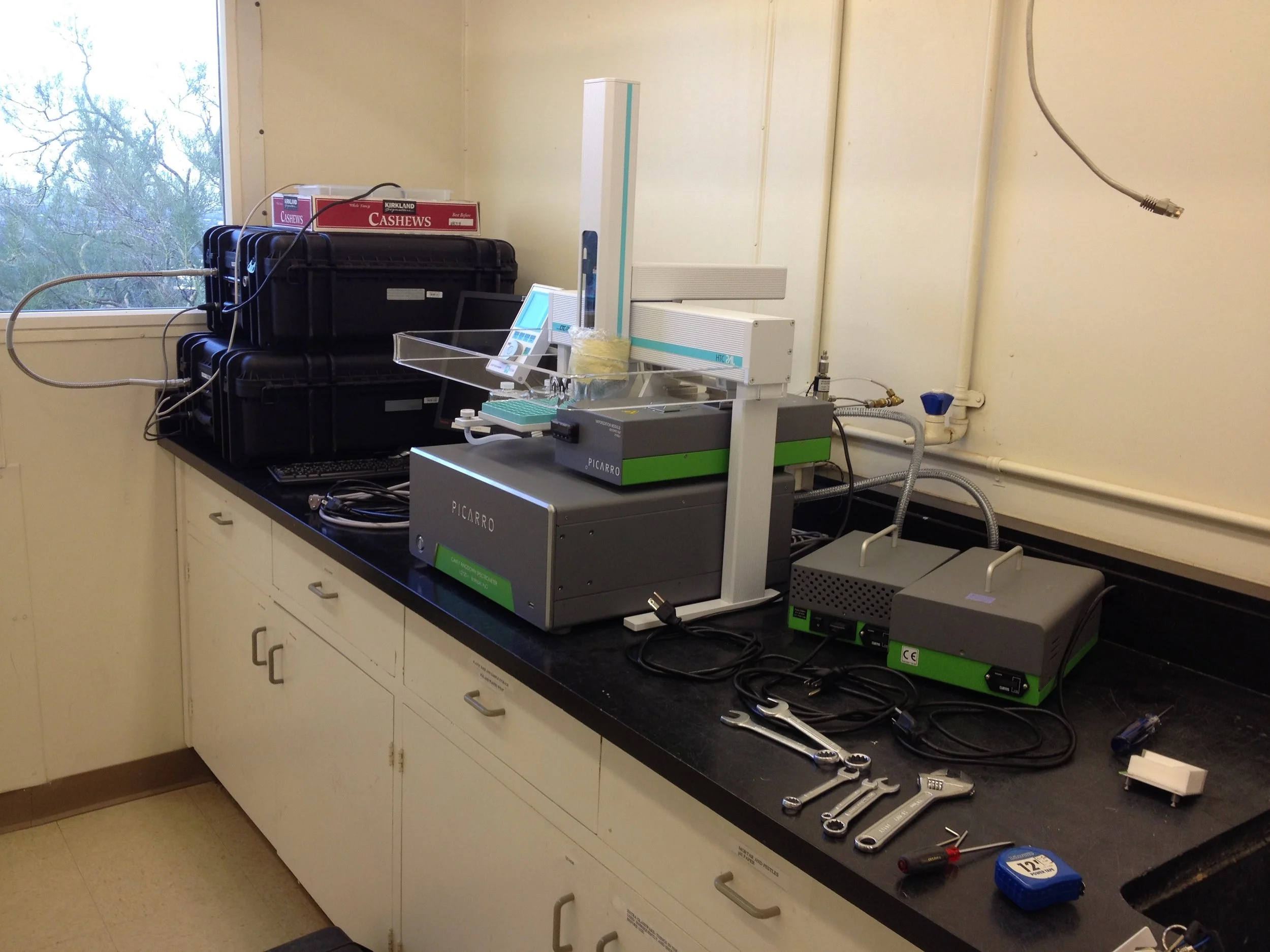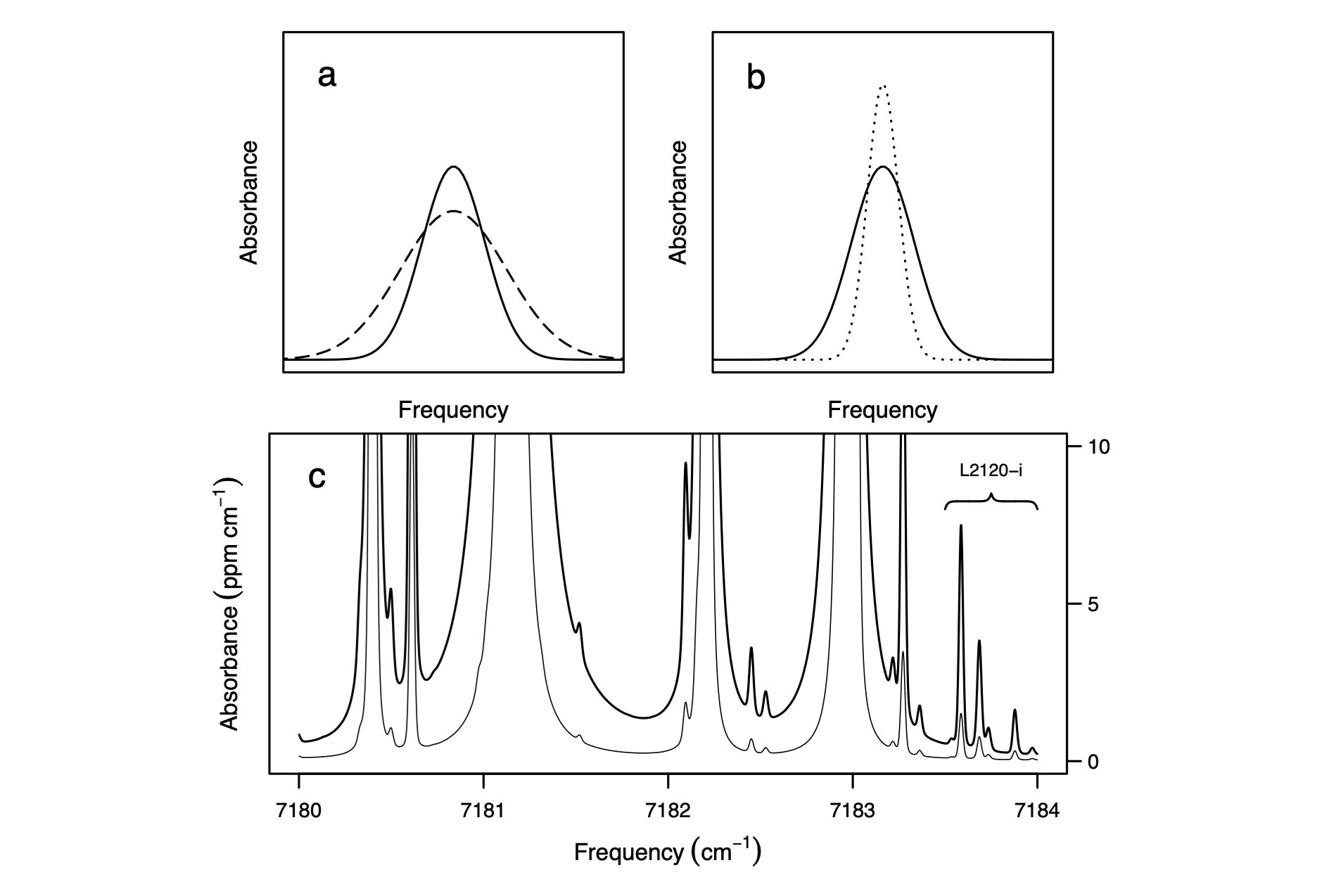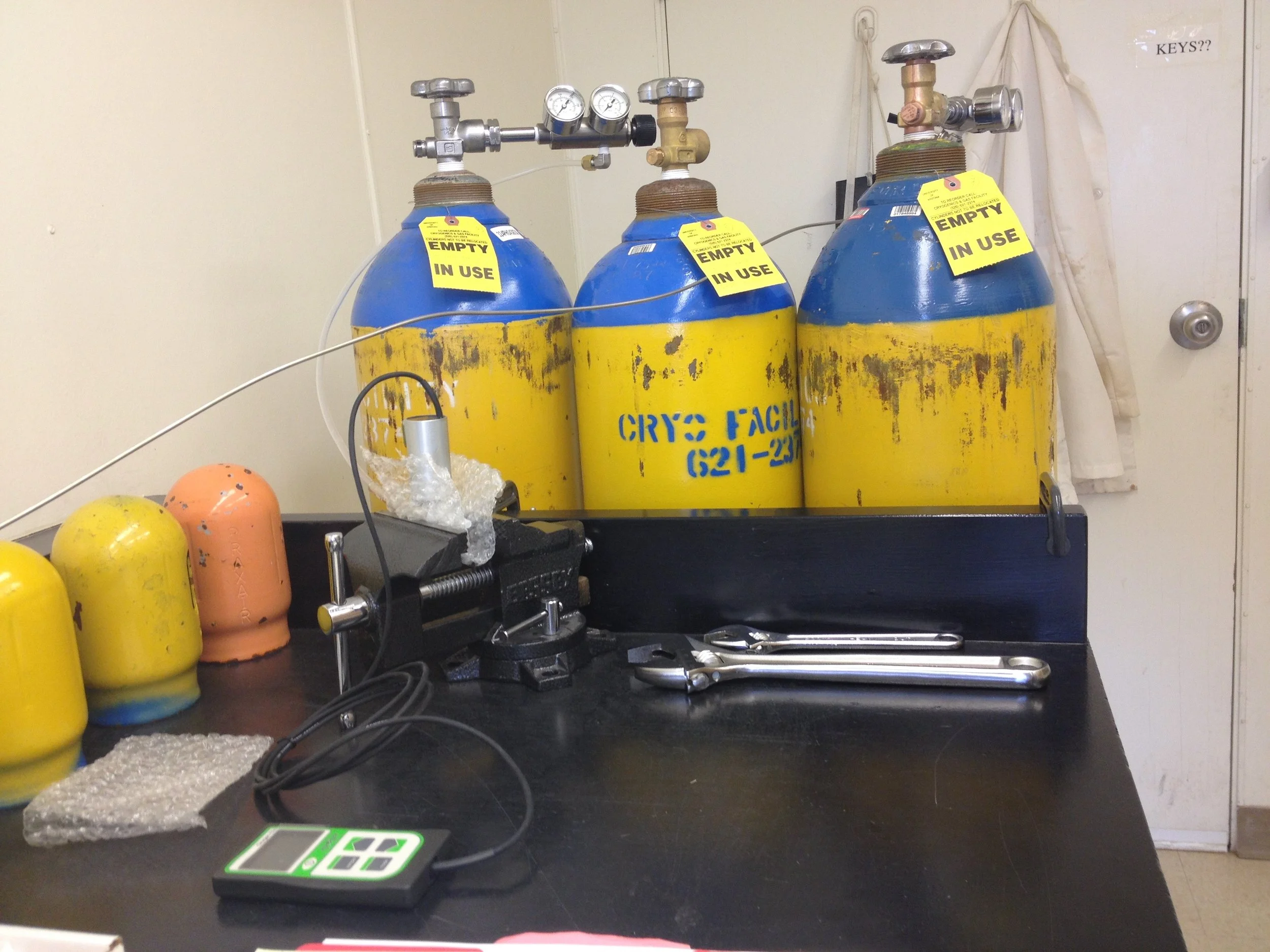Matrix effects
Motivation: One of the key challenges in applying laser absorption spectrometers for physiological, ecological, and related types of research is making accurate trace gas concentration and isotope ratio measurements under conditions where the background gas matrix changes dynamically.
Background: Dynamic matrices are challenging because collisions between the target molecule and the background impact the frequencies at which the target absorption line profile exhibits maximum absorption intensities (i.e., peak shifting) and the shapes of the absorption line profiles around those central frequencies (i.e., peak broadening or narrowing).
Approach: In order to explore this problem systematically and evaluate potential solutions, I collaborated with Chris Rella to study background gas effects on a commercially available cavity ring-down spectrometer that targets water isotopologue absorption features, the L2120-i manufactured by Picarro, Inc. Our study is outlined in the slides below.
The full story, and its significance
Full story: The full details of our findings can be found in this reference:
Reference: J. E. Johnson and C. W. Rella. 2017. Effects of variation in background gas mixing ratios of N2, O2, and Ar on the measurement of δ18O-H2O and δ2H-H2O values by cavity ring-down spectroscopy. Atmospheric Measurement Techniques 10(8): 3073-3091.
Article DOI: 10.5194/amt-10-3073-2017
Data DOI: 10.17605/osf.io/c7nsg
Other links: summary in Picarro library
Significance: To date, our analysis has been used by researchers in diverse fields as a point of reference for the development of semi-empirical calibration techniques. However, it also indicates there is potential for fundamentally re-designing the spectral acquisition and fitting strategies to accommodate dynamic background gas matrices. Looking to the future, this is a pathway that has potential to open up novel applications for these powerful instruments.






